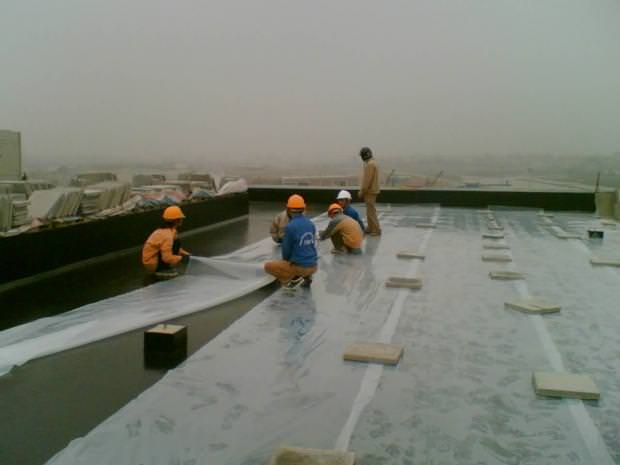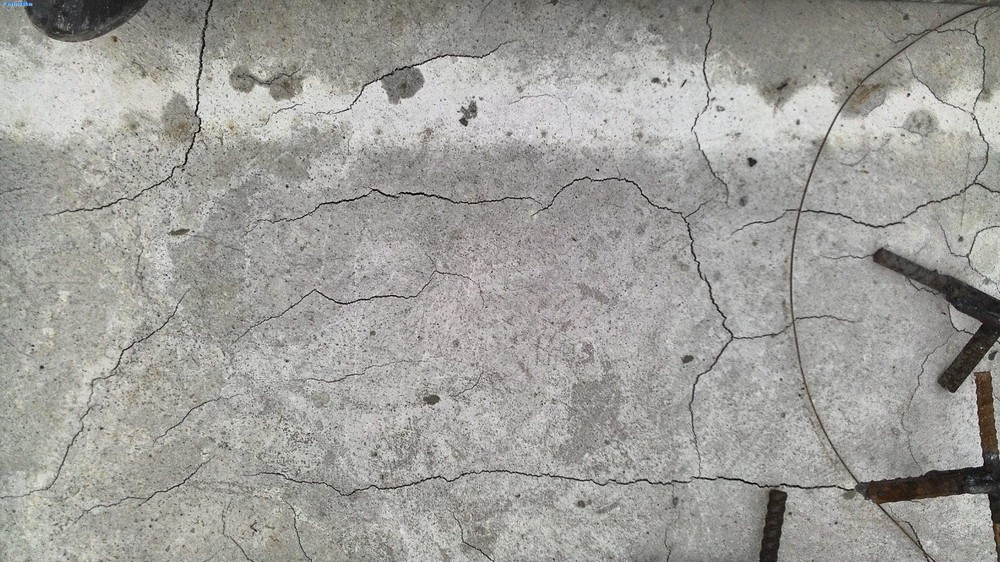Many people wonder: Why do workers spread dry leaves or straw on a newly laid concrete road?
Recently, a social media post discussing this question has sparked various opinions and intrigued many users.
Specifically, in the image, a section of concrete road has just been completed. Everything seemed typical if not for the detail: two men embracing and spreading a quantity of dry leaves onto the concrete surface.
Many people are puzzled: Why do they need to spread dry leaves on a road that has just been concreted? – Image 1. Photo: Confession Blog
This action can easily be observed on any newly completed concrete road. Many wonder what the main purpose of this action is and why dry leaves instead of fresh ones?
Underneath the post’s comments, many humorous explanations were offered:
“The concrete is still wet, so spreading them like this prevents birds from landing, right?”
“Maybe it’s to make it less slippery.”
“It looks like it’s creating a 3D forest road effect!”
The real reason In reality, this action isn’t pointless or humorous, as many might think. According to construction experts, spreading dry leaves on newly laid concrete is a common practice aimed at keeping the concrete or cement moist.
Simultaneously, it shields the newly laid concrete surface from rainwater or dew, preventing the concrete from cracking or becoming porous.
This practice usually takes place within 1 – 2 days after the concrete has been poured.
When spreading, the entire concrete surface, including the edges, needs to be covered. In extremely hot weather, workers might use a layer of straw or nylon covers or special-purpose fabric mats for better moisture retention and coverage.
However, using dry leaves is still considered effective and cost-efficient.

Why is it necessary to keep concrete, cement moist?
Keeping the concrete, cement moist is one of the most crucial and prioritized tasks after it’s been poured.
According to construction resources, if concrete, cement isn’t kept moist, water will evaporate rapidly from the surface. This process happens even quicker when the concrete is directly exposed to sunlight. This leads to weaker, more easily cracked finished products. This concept applies not just to road construction but also to residential construction.
In addition to moisture retention, well-maintained concrete has good strength development, stability in volume, resistance to freezing and thawing, abrasion resistance, prevention of setting or hardening, and reduced life expectancy of the entire construction.

Other considerations for newly poured concrete, cement:
- Avoid physical contact: Avoid stepping, leaning, or throwing any heavy objects onto freshly laid concrete or cement. Doing so can severely damage the newly laid material, resulting in the need for rework.
- Keep concrete moist: After the protective layer’s time has elapsed, continuously water all exposed surfaces of the concrete until the maintenance period ends. The maintenance period duration depends on the climatic conditions of each geographic area, varying between 1 – 7 days.
The frequency of watering should be approximately every 3 hours initially, at least twice a night. In the subsequent days, water three times a day after each day of watering.












